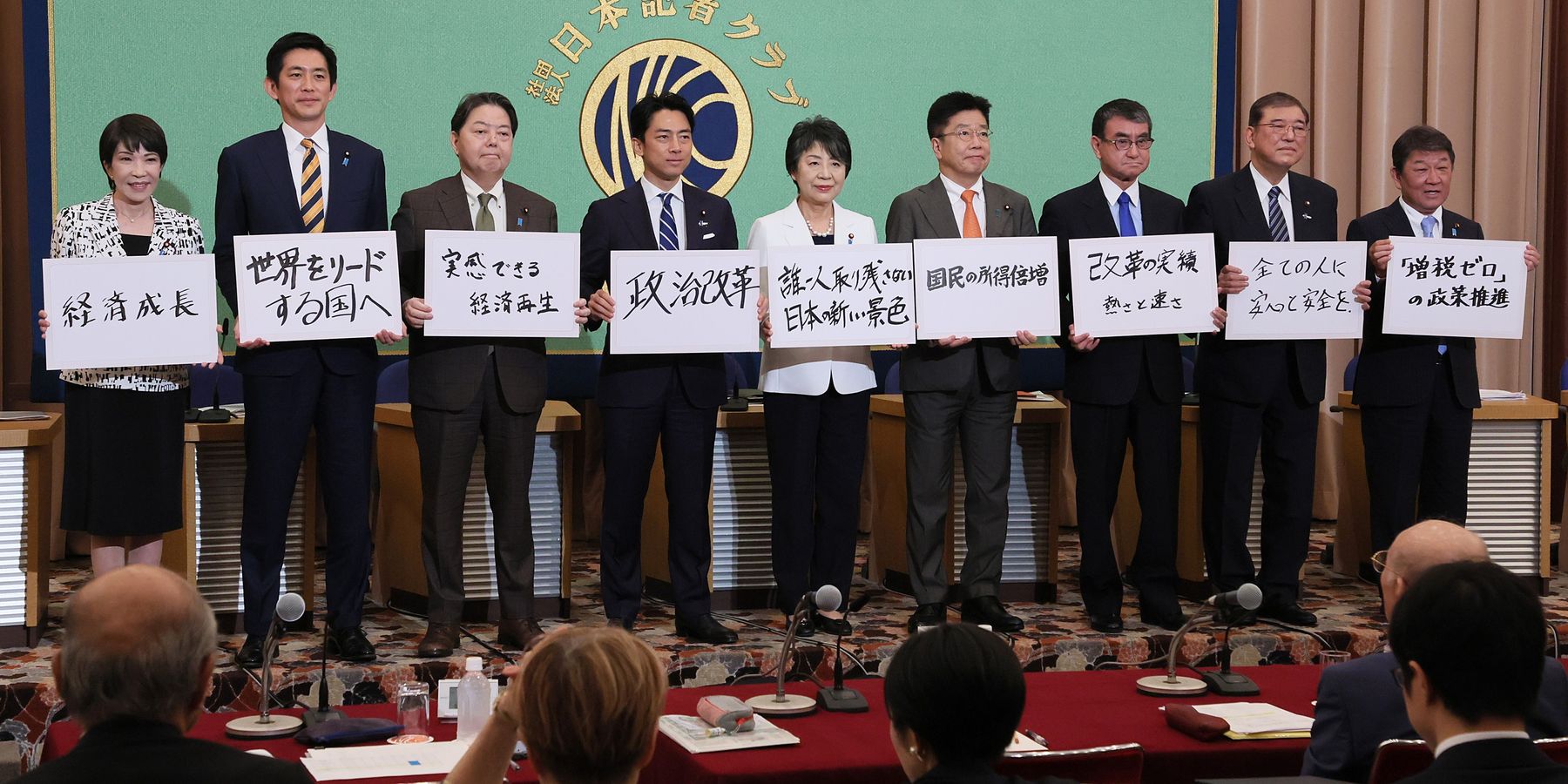By the end of this month, Japan will have a new prime minister, and whoever it is will come from the Liberal Democratic Party (LDP).
The likely candidates to lead the conservative LDP, which has ruled Japan since 1955 with only two short breaks, differ by gender, age, and faction. But they all share one important trait: Each is firmly committed to the U.S.-Japan military alliance and a joint policy of aggressively containing China. This is remarkable for a country once known for its culture of anti-militarism.
Eager to rescue his troubled party from defeat in the next general election, Prime Minister Kishida Fumio announced last month that he would step down as head of the LDP. Party officials will select a new president on September 27. The Kishida regime had been wracked by a couple scandals. The first came in 2021, after his predecessor, Prime Minister Abe Shinzo, was assassinated by a young man enraged by the political influence of the right-wing, Korea-based Unification Church. Press reports revealed that the church was helping to underwrite the LDP. The second and more recent scandal revolved around party factions that had collected millions of dollars in unreported campaign funds.
Japan has a parliamentary system, and the LDP now controls more than half of the seats in the House of Representatives, which chooses the prime minister. But the scandals have buffeted the ruling party, now supported by only 20 percent of the public, according to a recent NHK poll. To regain public trust, Kishida said the party needs a “fresh face.”
There are, indeed, two younger, if not entirely “fresh,” faces. One belongs to Koizumi Shinjiro, a 43 year old heartthrob who recently has dominated the Sunday talk shows. But Koizumi is well known as the son of a former prime minister who was, himself, a member of the former Abe and Suga cabinets. The other belongs to Kobayashi Takayuki, who is only 49 but already has served in the Abe and Kishida cabinets — first as parliamentary vice minister for defense and then as minister of economic security.
Among the declared and possible candidates are three women, either of whom would become (if successful) the first female prime minister of Japan. Kamikawa Yoko is the current foreign minister and previous justice minister; Takaichi Sanae is the minister of state for economic security; Noda Seiko was minister in charge of measures to combat the declining birthrate. All three women are quite conservative. Takaichi and Noda are members of Nippon Kaigi, an ultra-nationalist group with a revisionist view of history. Kamikawa once appeared to argue that women are worthless if they don’t produce children.
Traditionally, one could distinguish LDP pols by the money-raising factions to which they belong. But these groups have never been ideological, and they play a smaller role in Japanese politics today. Kono Taro is now the only candidate openly endorsed by a faction (the 54-member bloc led by former prime minister turned LDP vice president Aso Taro).
Two factions at the center of the recent “slush fund” scandal completely folded: the Abe bloc, which had been the largest, had included Ms. Takaichi; and the Nikai bloc, which had included Mr. Kobayashi. Prime Minister Kishida, trying to model good governance, dissolved his own faction, which had included Hayashi Yoshimasa, the current chief cabinet secretary, and Ms. Kamikawa, the current foreign minister.
But other factions supposedly died and were reborn as “policy groups.” This includes the bloc led by Ishiba Shigeru, the former defense minister who is running again (a fifth time) for party leader. Economy minister Saito Ken, who has hinted at running, is a member of that faction, or “policy group.” Likewise, Motegi Toshimitsu, secretary general of the LDP and a declared candidate, heads a renamed bloc. Former health minister Kato Katsunobu also belongs to the Motegi group and is running against his mentor for top dog in the LDP.
So it’s a free-for-all, wide-open mess. How are we to make sense of this important contest for Japanese leadership and its implications for relations with the United States?
Here’s my take: More than ever before, LDP politicians are slavishly pro-alliance and anti-China. That is, they identify with and wish to cultivate U.S. hegemony, even if it is waning.
Kono, for example, is profoundly hawkish about Beijing’s rise to power. He has even called for deploying nuclear submarines to counter Chinese maritime patrols in the East China Sea. Takaichi is another China hawk. She has promised to consolidate Japan’s hold over the Senkaku Islands, which Beijing also claims. In fact, Ishiba is probably the only candidate for LDP president who has openly called for deeper engagement rather than confrontation with China. He has said that the U.S.-Japan alliance can exist alongside a wider system of diplomacy among Asian powers.
All the candidates favor closer ties between the U.S. and Japanese militaries. This reflects, in part, a historical reality driven by increased cooperation between Kishida and U.S. President Joe Biden, who worked together to transform the 72-year old bilateral alliance from one that merely defends Japan against attack to one that projects joint power in the region, not just around the Japanese archipelago, but also in the East and South China seas.
But the pro-American lineup also reflects close personal relationships between Japanese politicians (and bureaucrats), on the one hand, and their U.S. counterparts, on the other. Put simply, this is a group of conservative MPs with strong links to the United States.
For example, several of the candidates for LDP leader studied in the U.S. Five — Kamikawa, Motegi, Kobayashi, Saito, and Hayashi — received graduate degrees from Harvard’s Kennedy School of Government. Kono did his undergraduate studies at Georgetown University before working on behalf of two different members of the U.S. Congress. Koizumi received a master’s degree from Columbia University and worked part-time for the U.S.-based Center for Strategic and International Studies. Takaichi spent two years working for a U.S. congresswoman. Noda attended high school in Michigan.
Interestingly, Ishiba, the former defense minister who is probably the least anti-China of all the LDP candidates, may also be the one with the fewest American connections. He is viewed as an iconoclast and outsider who is probably too “Asian-minded” to win the job. Japan, he told the Diplomat, “must think for itself how to deploy American forces in Japan, and not simply view it as a duty to allow the Americans to put bases anywhere in Japan that it likes.”
Thirty years ago, that kind of sentiment might have won favor with Japanese citizens worried about the possible consequences of the U.S.-Japan security alliance. Today it marks otherwise conservative Ishiba as an outlier, at least within the LDP.
- Can China, Japan, and South Korea just get along? ›
- What new leadership in Japan will mean for US, regional relations ›
- Japan's new PM may have a bone to pick with the US | Responsible Statecraft ›
- Election leaves Japan in a mess | Responsible Statecraft ›
- Wait — weren't US Marines supposed to leave Okinawa? | Responsible Statecraft ›
- First female Japan PM takes hawkish position on China, Taiwan | Responsible Statecraft ›
















